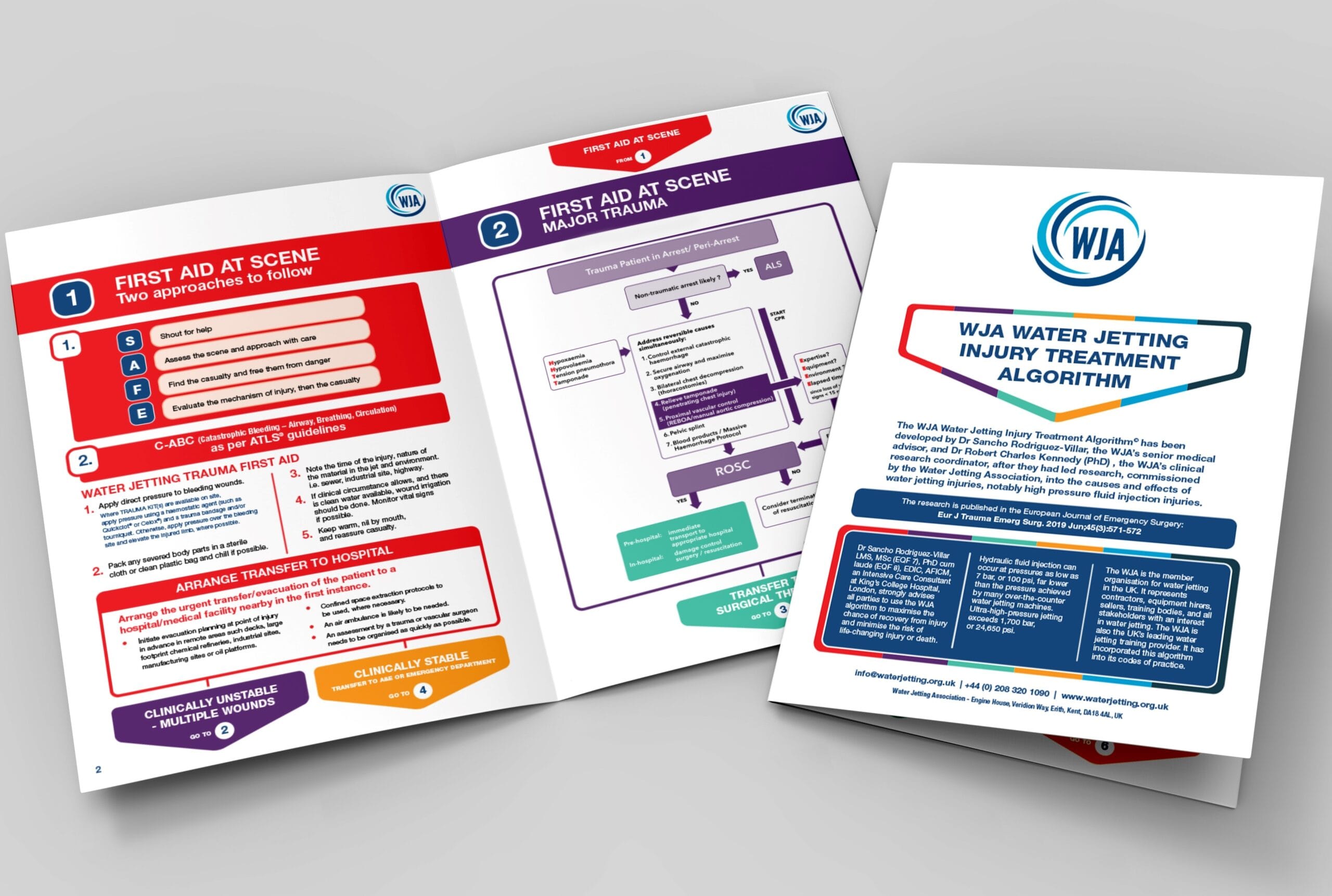WJA medical expert offers to advise on water jetting injuries

The Water Jetting Association’s Senior Medical Advisor has warned that the popularity of research he led for the WJA into water jetting injuries suggests the injuries are more common than previously thought.
Dr Sancho Rodriguez-Villar, an intensive care consultant at Kings College Hospital, in London, said he was surprised that the research paper has been downloaded more than 10,000 times since it was published four years ago.
He puts this down, in part, to water jetting applications becoming more common across an increasing number of industries, including construction, manufacturing, energy generation – including the management of radioactive materials – and even water sports.
The scale of global interest in the research indicates water jetting injuries and other fluid injection injuries – for example involving hydraulic fluid, paint and paint thinners, grease, and petrol – are very likely to be under-reported.
Not as uncommon
In a video interview recorded by the WJA, he said: “So, definitely we can say [these injuries] are not as rare as we thought initially. We need to be very careful with that. I will say not as uncommon, but very likely not reported. Yet the injuries have potentially significant consequences for those who suffer them.”
Dr Rodriguez-Villar and the WJA are now working together to try to ensure people get the best medical advice about water jetting injuries and that research can continue into how best to treat them.
It means people with concerns can contact him via the WJA website and share information in confidence, in the manner of a doctor-patient relationship.
He said: “I am not interested in the actions of the contractor. That is beyond my scope. I just want to give confidential advice to a person about their injury. No one else is involved, even at the WJA. This is completely private, confidential, and free.
“So I would urge people to please use this service. Both I and the WJA are keen to change attitudes and awareness in relation to water jetting injury to move forward and to open a culture of learning from the incidents while maintaining strict confidentiality.”

Global interest
The WJA commissioned Dr Rodriguez-Villar and its Research and Development Advisor, Dr Robert Kennedy (PhD) to lead a team of senior physicians to carry out the research which took three years to complete.
The resulting research paper, Management of industrial high-pressure fluid injection injuries (IHPFII): the Water Jetting Association (WJA) experience with water driven injuries, was published in the European Journal of Trauma Medicine in 2019.
The level of interest in it indicates that it has become one of the primary sources of trusted information about fluid injection injuries around the world, so is helping to achieve the WJA’s objective to raise awareness about the risks associated with such injuries.
The research paper includes a water jetting injury treatment algorithm which, for the first time, summarises the optimum pathways to treat the injuries, from first response to an injury through hospital care, to rehabilitation and recovery.
Speed of bullet
In his video interview, Dr Rodriguez-Villar described the reasons why water jetting injuries can be so devastating, saying: “We define a fluid injection as an injury when you break through the skin.
“[Water jetting] operators are working at pressures of over 40,000 pounds per square inch. The speed of the water is over 2,600 kilometres per hour, well above the speed of sound . So it’s the speed of the bullet.”
This meant the water can penetrate the skin with extreme force, taking a range of contaminants, including oils, chemicals, dust, organic matter, viruses and bacteria deep into the body, he added.
However, because the entry point is very small, medical professionals often do not appreciate the severity of the injury.
“We found too many occasions where the patient goes to A&E, they have a very little [injury] entry point,” said Dr Rodriguez-Villar.
“They get discharged and after six hours their arm becomes necrotic, and they need an amputation. So they end up with a great disability, long-term.
“Our algorithm highlights it is very important that you know what to do and obviously to take seriously these injuries. They need to be decompressed and explored in theatre, with microbiology [investigations] and antimicrobials started from arrival at hospital.”
Codes of practice
The WJA water jetting treatment algorithm is an integral part of the association’s two codes of practice, the Blue Code and the Red Code, which cover high and ultra-high-pressure jetting and water jetting in drains and sewers, respectively.
It is included in all WJA City & Guilds accredited training courses, which include a Safety Awareness class-based course, five Practical Modules covering specific types of wate jetting, and a pressure washing course.
The algorithm has been recently redesigned into an A4 format to make it easier to view and use, in particular by incident first responders and medical professionals.
It is free to view and download from the WJA website and can be bought from the WJA in a printed booklet format.
Find out more
More information about the WJA’s approach to health and safety can be found on our health and safety page on the WJA website.
Talk to the WJA about water jetting safety, training and membership. Telephone: +44 (0) 20 8320 1090. Email: info@waterjetting.org.uk.
If you have experienced a water jetting injury and remain concerned about its effect, you can contact Dr Sancho Rodriguez in confidence. Email: sancho@waterjetting.org.uk.

